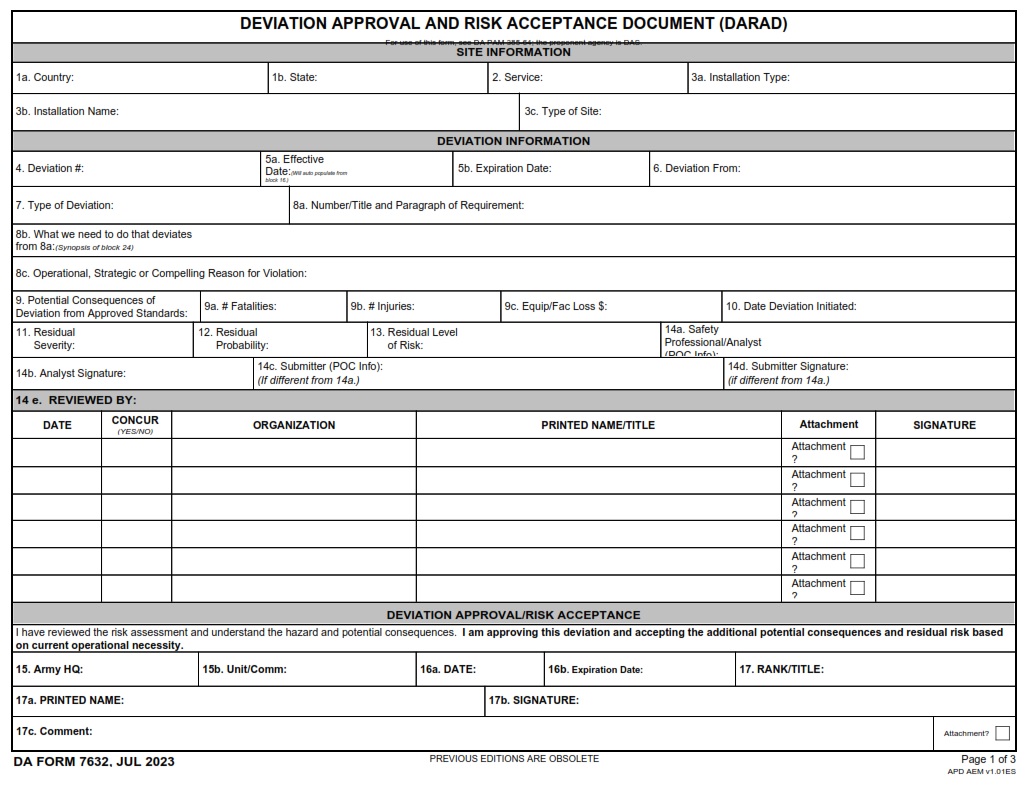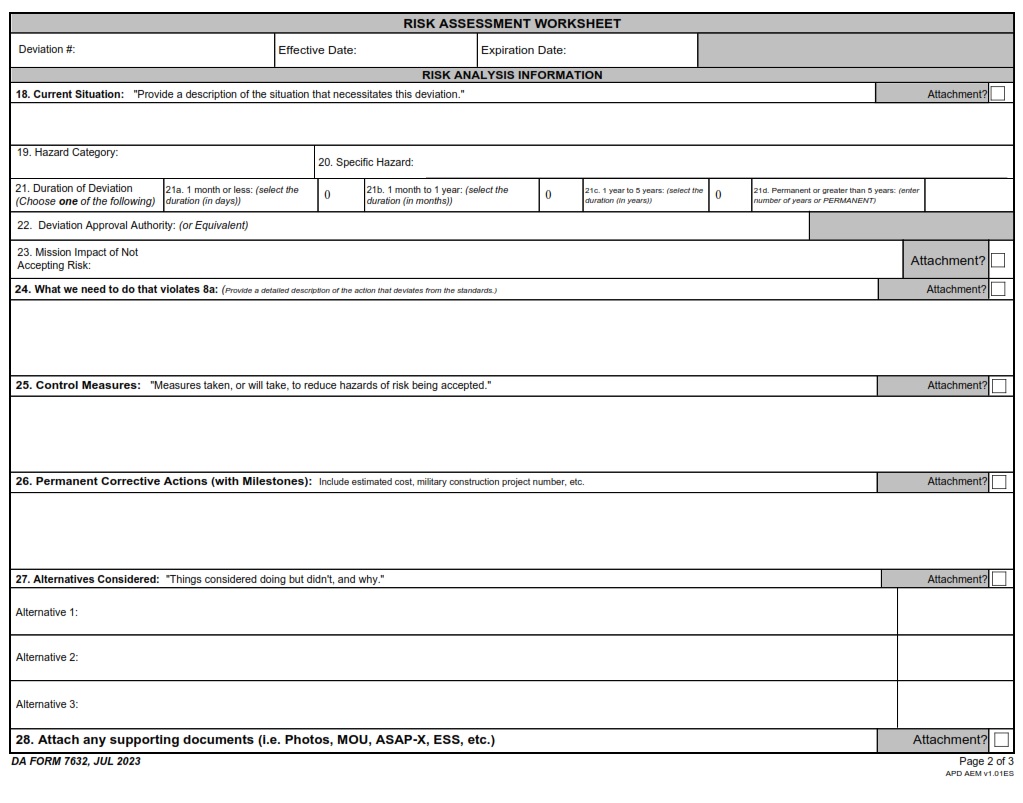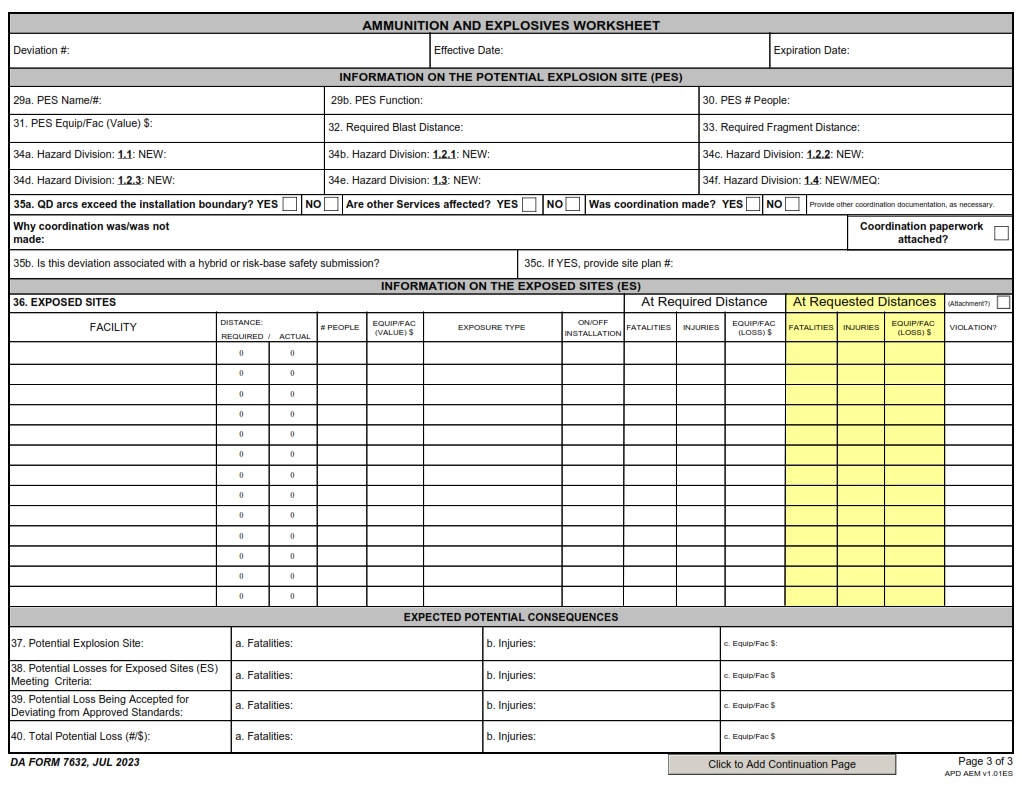DAFORMFILLABLE.COM | DA FORM 7632 Fillable – Army Pubs 7632 PDF – DA FORM 7632, also known as the Deviation Approval and Risk Acceptance Document (DARAD), is a crucial form within the U.S. Army’s risk management framework. This article provides a comprehensive overview of the form, its purpose, and how it is utilized. The information presented here is designed to be SEO-friendly, structured with H2 and H3 headings for clarity, and written in a third-person perspective.
DA FORM 7632 – Deviation Approval and Risk Acceptance Document (DARAD)
| Form Number | DA FORM 7632 |
| Form Title | Deviation Approval and Risk Acceptance Document (DARAD) |
| Form Date | 7/1/2023 |
| Form Proponent | DAS |
What is DA FORM 7632?
DA FORM 7632, titled Deviation Approval and Risk Acceptance Document (DARAD), is an official document used by the U.S. Army to manage and document deviations from established safety standards and the associated risks. This form is essential for ensuring that any deviations are properly assessed and approved, maintaining the safety and security of military operations.
Pub/Form Number and Date
- Pub/Form Number: DA FORM 7632
- Pub/Form Date: 07/01/2023
Pub/Form Proponent and Status
- Pub/Form Proponent: DAS
- Pub/Form Status: ACTIVE
Purpose of DA FORM 7632
The primary purpose of DA FORM 7632 is to document and approve deviations from standard procedures, especially those that involve potential risks. It ensures that all deviations are thoroughly evaluated and that appropriate risk management measures are in place. This form is critical in maintaining operational safety and compliance with regulatory standards.
Key Elements of DA FORM 7632
Prescribed Forms and Directives
- Prescribed Forms/Prescribing Directive: PAM 385-30, PAM 385-64
These directives provide guidelines and standards for completing the Deviation Approval and Risk Acceptance Document (DARAD).
Supersession Information
- Superseded/Replaced Other Pub/Form: REPLACED DA FORM 7632, 04/01/2015
The current version of DA FORM 7632 replaces the previous version dated 04/01/2015.
Security Classification and Distribution
- Security Classification: UNCLASSIFIED
- Dist Restriction Code: A APPROVED FOR PUBLIC RELEASE; DISTRIBUTION IS UNLIMITED
How to Use DA FORM 7632
Step-by-Step Process
- Identify the Deviation: Clearly describe the deviation from standard procedures.
- Assess the Risk: Conduct a thorough risk assessment to determine the potential impact of the deviation.
- Document the Approval: Use DA FORM 7632 to document the approval of the deviation, including the risk assessment and any mitigating measures.
- Implement Risk Management Measures: Ensure that all identified risk management measures are in place and monitored.
Importance of Accurate Documentation
Accurate documentation on DA FORM 7632 is crucial for accountability and traceability. It ensures that all deviations are properly evaluated and that any risks are managed effectively.
Changes and Updates
EFILE
- EFILE: 001 11/14/2023 9 Page(s)
The most recent update to the electronic filing of DA FORM 7632 was made on November 14, 2023.
Conclusion
DA FORM 7632 – Deviation Approval and Risk Acceptance Document (DARAD) is an essential tool for the U.S. Army in managing deviations from standard procedures and ensuring that associated risks are properly assessed and mitigated. By following the guidelines and completing the form accurately, military personnel can maintain operational safety and compliance with regulatory standards.
Understanding the importance and proper usage of DA FORM 7632 helps in maintaining the integrity and safety of military operations, making it a vital component of the Army’s risk management framework.


